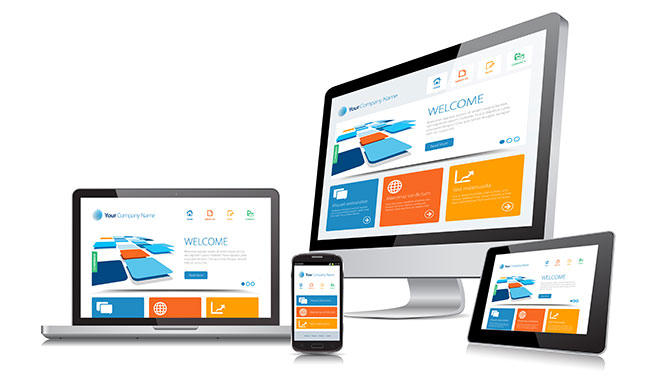
Design is highly subjective. Everyone can agree on that. As Web technology has evolved in sophistication over the years, design experimentation has exploded. That’s why these days when you are surfing the web, you will sometimes run into sites that are completely baffling, even in B2B.
Don’t get me wrong, I am all for creativity and experimentation in web design, and it is possible that a design that weirds me out personally is actually a very good fit for its target audience. But since we are talking about B2B web desing here, my feeling is that the design has to be tailored to fit a good cross-section of the business population, from Presidents to Customer Service Reps, from Warehouse to Marketing to Sales to Accounting.
Rules of thumb
Guess what? The fundamentals that you learn about design in school still apply! It sounds cliché but it is true: design your site as if it was made for a simple guy like Joe Blow from company x.
Follow the fundamentals of legibility
Aim to maximize ease of reading. Put care into the space between letters and between lines. Give the text breathing room. A B2B site usually has more written content than a B2C site. Its experience is based around sharing in-depth knowledge about the product or the services, to help customers better make up their minds over a long sales cycle. So don’t make your prospects read something that goes full width across the screen and don’t cram your texts into boxes.
It’s funny in a way that we are coming back to what we leant in design school, but for print!
Ease of navigation
Guide your prospects. The places they would naturally go on the site should be within easy reach. Always aim for the least amount of clicks. One of the best ways to refine this is by testing your design on people from all departments in your company. Let them surf your design and get back to you with comments.
Respecting a graphical grid approach
Sounds basic, but a design guided by grids will quickly make sense to the B2B user. It is more intuitive. It will allow them to better digest the large amounts of information you are putting across.
I once came across a B2B site with super slick design and incredibly beautiful hi-res photos, but in order to attain a simple product menu, I had to scroll down what seemed to me like 20 feet past more beautiful photos to finally find what I wanted. It was infuriating. This would be the major downside to what has been called “The Rebirth of Art Direction”.
A good solution to such a problem would be the “Hamburger” menu (a button with lines in it that gives you access to the traditional menu options). It’s a popular design choice for mobile navigation because it avoids menus falling onto 2 or three lines, but it can also significantly reduce frustration on an overly image based site.
Speaking of image based sites, if you are designing using a carousel (a large portion of your landing page that has alternating pictures), make sure you don’t use more than 3 images otherwise not only will you users loose interest, but it will slow down the sites overall speed, which has become crucial.
A word about parallax scrolling (A foreground and background that scroll at different speeds): Yes, it enables you to tell a story with the graphical elements and it also simulates depth, which is a nice trick, but honestly it is not optimal for user experience. It is a slow technology and it can even create motion sickness. It usually consists of one page, so it doesn’t give search engines much to crawl. Also it’s design is inefficient when using for both desktop and mobile. You end up having to choose between which one you will use it on. Not worth the trouble.
User experience now includes speed
As mentioned above, this is now an integral part of navigational comfort. Funny how we all feel a rising impatience when a page takes more than 2 seconds to load. Be very disciplined about keeping your plug-ins up to date and make sure that whatever is hosting your website has plenty of memory space.
These are all just fundamentals of Web site design, really. And these guidelines are useful to follow in the B2B context. I would even say they can apply just as well to B2C.
Happy designing!




